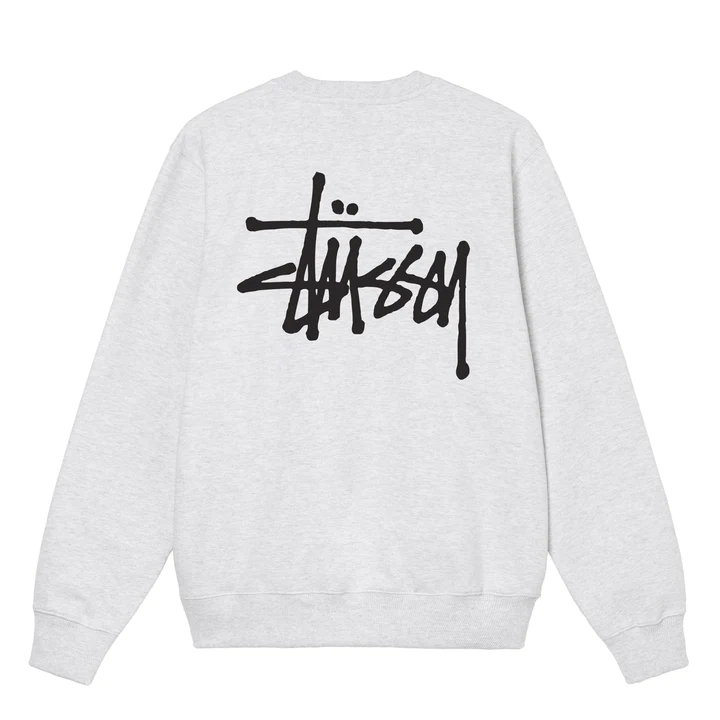More Than Just a Clothing Label
In the world of fashion, few names have carried as much cultural weight as Stussy. Born from the surf culture of Southern California in the early 1980s, Stüssy evolved into one of the most influential streetwear brands of all time. It bridged the gap between underground youth movements and mainstream recognition, setting the stage for what we now understand as streetwear culture. What began as one man’s hobby of scrawling his name on surfboards turned into a global brand that continues to inspire generations. Stüssy’s journey is not just a story of clothes—it’s a story of art, community, rebellion, and cultural fusion.
The Origins of Stüssy: From Surfboards to Shirts
The brand traces its roots back to Shawn Stussy, a surfboard shaper from Laguna Beach, California. In the late 1970s, Shawn began signing his custom surfboards with a bold, graffiti-like scrawl of his last name, which soon became iconic. What made this signature special was its raw, hand-drawn quality—it wasn’t polished or corporate, but organic and authentic, reflecting the rebellious spirit of the surf scene.
To promote his surfboards, Shawn began printing the same signature logo on T-shirts and caps. These weren’t made with the intention of creating a fashion empire—they were souvenirs, small promotional items meant for surfers and close friends. Yet, almost instantly, people gravitated toward them. The logo carried a certain attitude and authenticity that resonated beyond the beaches of California. Soon, Stüssy shirts were being worn not just by surfers but by skaters, musicians, and creative youth who identified with the brand’s effortless cool.
The 1980s: Stüssy as a Cultural Movement
By the mid-1980s, Stüssy had transformed from a local surf brand into a cultural phenomenon. The brand’s rise coincided with the global explosion of hip-hop, punk rock, and skateboarding, each of which found a natural synergy with Stüssy’s aesthetic. Unlike traditional surf brands that stuck to beach-inspired graphics, Stüssy experimented with bold typography, street-inspired designs, and even playful reworks of luxury fashion logos.
This was the era when the Stüssy Tribe came into existence—a loose collective of musicians, DJs, skaters, and artists who championed the brand and embodied its spirit. The Tribe was less of a marketing strategy and more of a lifestyle community. Members included influential figures like DJ Hiroshi Fujiwara in Japan and James Jebbia, who would later go on to found Supreme. The Tribe represented global creativity, with Stüssy connecting people from Los Angeles to London, New York, and Tokyo.
Stüssy’s ability to cross cultural boundaries was groundbreaking. It was one of the first brands to show that fashion could transcend geography and subculture, creating a truly global movement.
The Signature Style of Stüssy
At the core of Stüssy’s success lies its signature design DNA. Unlike other brands that relied on seasonal fads, Stüssy built a timeless yet adaptable style.
- The Stüssy Logo – The scrawled signature is arguably one of the most iconic logos in streetwear history. It embodies individuality, rebellion, and authenticity. Much like Nike’s swoosh or Adidas’ three stripes, the Stussy Hoodie signature transcends language barriers, instantly recognizable worldwide.
- Graphic Tees – The graphic T-shirt became the brand’s canvas for cultural commentary. Stüssy often borrowed elements from pop culture, music, and even high fashion, remixing them with a street sensibility. This playful appropriation would later inspire many other streetwear brands.
- Street-Surf-Skate Fusion – Stüssy pioneered a hybrid aesthetic that pulled from surf culture, skateboarding, hip-hop, and global street styles. This cross-pollination made the brand relatable to diverse communities.
- Collaborations Before They Were Trendy – Long before collaborations became the norm in fashion, Stüssy was already partnering with artists, designers, and musicians. These projects gave the brand an edge and maintained its reputation as a cultural tastemaker.
Global Expansion and Influence
In the 1990s, Stüssy expanded globally, opening flagship stores in key cities like New York, Tokyo, and London. Each store became a cultural hub, reflecting the brand’s local yet international identity. Tokyo, in particular, embraced Stüssy with open arms, as Japan’s youth culture resonated deeply with the brand’s fusion of music, art, and fashion.
The brand’s global presence also strengthened its connection to music. In New York, Stüssy aligned with hip-hop and graffiti culture, while in London, it connected with club scenes and electronic music. This adaptability ensured that the brand remained relevant no matter where it landed.
What set Stüssy apart from traditional fashion labels was its ability to move fluidly across different communities. While luxury brands were exclusive and rigid, Stüssy was inclusive, organic, and rooted in real-life subcultures. This democratic approach laid the foundation for modern streetwear, where authenticity and community matter more than polished runways.
The Stüssy Tribe: A Network of Creative Visionaries
Perhaps the most legendary part of Stüssy’s history is the Stüssy Tribe. Unlike formal ambassador programs or influencer partnerships, the Tribe was about genuine connections. It included DJs, artists, musicians, and creatives who shared the same rebellious energy.
The Tribe wasn’t about selling clothes—it was about building a movement. Members wore Stüssy because it represented their lifestyle, not because they were paid to promote it. This authenticity gave the brand credibility, making it more than just a label—it was a symbol of belonging to an underground cultural network.
Today, we see echoes of the Tribe in how brands build communities online. Yet, Stüssy’s version remains unique because it was rooted in real-world connections, friendships, and creative collaboration.
Challenges and Resurgence
Like many pioneering brands, Stüssy faced challenges as trends shifted. By the late 1990s and early 2000s, newer streetwear brands began to rise, and Stüssy had to navigate an increasingly competitive market. Some argued that the brand had lost some of its edge, as mainstream popularity diluted its underground appeal.
However, Stussy Shirt proved its resilience by staying true to its core values while evolving with the times. The 2010s marked a strong resurgence, as a new generation of fashion enthusiasts discovered the brand’s heritage. Vintage Stüssy pieces became highly sought after, and collaborations with contemporary brands and designers reignited its relevance.
Collaborations: Reinventing the Brand
One of the most significant factors in Stüssy’s longevity has been its collaborative spirit. From Nike to Dior, Stüssy has partnered with a wide range of brands, balancing underground credibility with mainstream visibility. Each collaboration feels like a cultural exchange rather than a mere business transaction.
For instance, Stüssy’s collaborations with Nike produced some of the most iconic sneakers of the last two decades, blending sportswear with streetwear seamlessly. More recently, its collaboration with Dior showcased how far the brand had come—from surfboards on California beaches to high-fashion runways in Paris.
These collaborations highlight Stüssy’s unique ability to adapt while maintaining its DNA. It proves that the brand can exist comfortably in both underground street culture and luxury fashion without losing its identity.
Stüssy in the Modern Streetwear Landscape
Today, Stüssy holds a revered place in the world of fashion. It is celebrated not just as a clothing brand but as a foundational pillar of streetwear. Modern giants like Supreme, Palace, and Off-White owe much of their existence to the path Stüssy paved.
In a world where streetwear has become mainstream and billion-dollar corporations dominate the industry, Stüssy remains refreshingly authentic. It doesn’t chase trends—it sets them. The brand still operates with an independent spirit, focusing on creativity, community, and quality rather than mass production.
What makes Stüssy especially relevant today is the renewed appreciation for heritage and authenticity. Younger generations seek brands with stories, and Stüssy’s history is rich with cultural impact. Vintage collections, archival re-releases, and limited drops keep the brand’s legacy alive while engaging new fans.
The Legacy of Stüssy
Stüssy’s legacy is not defined by profits or fashion weeks—it is defined by its cultural impact. It is a brand that blurred the lines between surf, skate, hip-hop, and fashion, creating a blueprint that countless others have followed. It pioneered the idea that a logo could become a global symbol of belonging, long before “hype culture” and limited-edition drops dominated the industry.
Most importantly, Stüssy represents the power of authenticity. What started as one man’s graffiti-like signature became a movement embraced by millions. In an era where branding often feels artificial, Stüssy’s story is a reminder that true cultural influence comes from passion, creativity, and community.
The Spirit of Stüssy Lives On
Four decades after its inception, Stüssy continues to thrive—not as a relic of the past but as a living, evolving force in global fashion. Its story reflects the journey of streetwear itself, from underground subcultures to global recognition. What makes Stüssy enduring is its refusal to compromise its identity. It remains rooted in the creative energy of surf, skate, and music, yet forward-thinking enough to collaborate with luxury houses and remain at the forefront of modern culture.
Stüssy is more than just clothing—it is a symbol of freedom, community, and timeless style. Its impact on fashion, art, and youth culture cannot be overstated. As long as there are young people seeking to express themselves through fashion, the spirit of Stüssy will live on.





